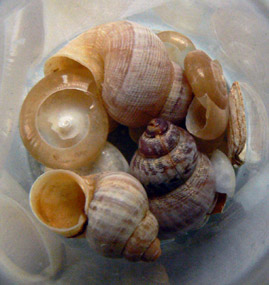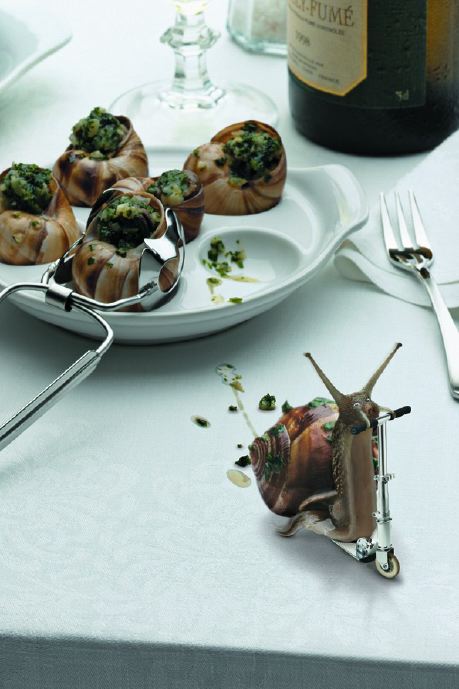The following is a posting by the University of York, dated January 30, 2013:
An international team of researchers has shown that old wives’ tales that snails can tell us about the weather should not be dismissed too hastily. While the story goes that if a snail climbs a plant or post, rain is coming, research led by the University of York goes one better: it shows snails can provide a wealth of information about the prevailing weather conditions thousands of years ago.
The researchers, including scientists from the Scottish Universities Environmental Research Centre, analyzed the chemistry of snail shells dating back 9,000 to 2,500 years recovered from Mediterranean caves, looking at humidity at different times in the past. Their findings, which are reported in the journal Quaternary International (abstract here), reveal that when the first farmers arrived in Italy and Spain, the western Mediterranean was not the hot dry place it is now, but warmer, wetter and stickier.
The research was led by Dr André Carlo Colonese from York’s Department of Archaeology. Dr. Colonese and his co-authors believe that land snails have great potential as a source of information about human behaviour and palaeoclimatic conditions and therefore should be given much more attention. Dr. Colonese, an EU Marie Curie Fellow in York’s Centre for Human Palaeoecology & Evolutionary Origins, said: “By putting together research on snails from multiple sites across Spain and Italy, we were able to produce a large scale regional picture for weather conditions over the western Mediterranean area. “This allowed us to observe differences in climate across the region. Interestingly, when compared with previous studies, we found that while conditions on the Atlantic coast of northern Spain were probably much like those of today, on the Mediterranean side in locations such as southern Spain and Sicily, conditions were much more humid.”
Archaeological sites around the Mediterranean basin contain an abundance of land snail shell remains. The researchers selected well-preserved shells for isotopic analysis from the early to late Holocene layers, covering the Mesolithic, Neolithic, Chalcolithic and Bronze Age periods. They looked at the oxygen and carbon isotopic compositions of the shells of Pomatias elegans (or the round-mouthed snail as it is more commonly known), comparing those found in the Iberian Peninsula sites with modern shells of the same species.
Co-author Dr Giovanni Zanchetta, from the Earth Science Department at the University of Pisa, Italy, said: “Stable isotopes on land snail shells have represented a challenge for researchers for years, but using archeological well-dated sites, new fundamental insight on past climate are coming along. And we are just at the beginning because there are a lot of excavations which can yield rich material.” The shell stable isotope measurements were carried out at SUERC, East Kilbride, Scotland, using a mass spectrometer. Further analysis was performed at the Cornell Stable Isotope Laboratory in the United States. Co-author Professor Tony Fallick of SUERC and Professor of Isotope Geosciences at the University of Glasgow said: “This is a classic example of multidisciplinary research where colleagues from a variety of backgrounds including archaeology, climate and environmental science, and geochemistry collaborate to deliver insights into our recent past that have societal impact.”





